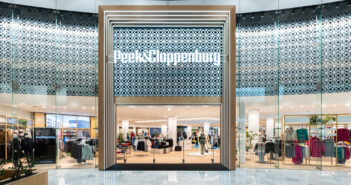The role of digitally native vertical brands (DNVBs) and the opportunity to introduce them to the shopping experience was discussed on 31 August in a digital session dedicated to DNVB companies and their role as possible game changers and catalysts within brick and mortar stores in malls and on high streets as part of the build-up to MAPIC 2021.
This online event also provided a unique and exclusive opportunity to showcase innovators and digitally native brands, which will once again play an important part at MAPIC 2021, which takes place in Cannes, France from 30 November to 2 December this year, after being held digitally alongside LeisurUp in 2020.
Speakers included Miroslava Flamova, fashion designer, FLAM; Mohamed Haouache, CEO, The Storefront; Severine Buffard, marketing director, Altarea Commerce, Alatrea; and Yannick Hontarrede, co-founder, Cul & Chemises. The session was moderated by MAPIC head of retail Rita Manzhieva.
Severine Buffard, marketing director at Altarea Commerce, part of developer Altarea, pointed out that working with a digitally native brands as a shopping centre landlord required a completely different approach for physical stores to the traditional leasing model.
You construct the offer and the strategy with the DNVB and so it’s very important to work with the founders,” she said. “We have a team that works in a special way with the DNVBs, in a partnership. We have simplified and flexible contracts from one day to more or less three years, but these are different types of contacts. Depending on their maturity, we have different solutions.
She said that the flexible retail model is based on data sharing, “which means when we decide to go together we have a way of valuing the rent as we go together.”
Part of this approach is to allow the DNVBs and new brands to focus on their store operation, selling and the consumer experience, while Altarea helps them with everything else that they need in terms of running a commercial space within a mall.
Brick and mortar stores
Such an approach was welcome by Yannick Hontarrede, co-founder of brand Cul & Chemises, which was created from a two-person Blog team that began to consult with followers over developing a brand and products.
“One year ago we decided to start the development of our brand [as Bloggers], which we developed with our followers, to create a cooperative brand developed by our community for them and us,” recalled Hontarrede.
The company has financed production and retailing through a crowd funding exercise, which raised two and a half times the original target. The company is based on 100% manufacture in France and the range was developed through consultation with followers and the Blog community.
Hontarrede is keen to open stores but admitted that the investment and commitment of signing the lease on a traditional store would be too complicated and expensive for the business at this point in its growth path. He was, however, enthusiastic about the idea of more flexible and pared down strategies to take space.
I think we are physically mature enough to go to a market,” he said. A proposal like a capsule [on approach outlined by Altarea]is perfectly suitable for us, with a customisable contract and enough margin to survive. To share with other brands is also very important, because it helps bring the community to us.
Digitally native vertical brands
Iroslava Flamova, fashion designer for Flam Label, also said she would welcome the opportunity to bring her bespoke womenswear brand to physical environments.
“My main channels are Instagram, especially, and Facebook,” she explained, as she outlined the history behind her brand which she described as “feminine, affordable clothes”.
Mohamed Haouache, CEO at The Storefront, a company that brings brands together with landlords, typically to occupy temporary space on simplified contracts, added: “Right now what we see is that the cost of physical retail is getting more and more affordable, making it more viable than e-commerce.”
He said that The Storefront’s experience of those DNVB companies looking to open within malls or on high streets was polarised between the highly experienced and start-ups with no background in store retailing at all.
New brands tend to be very experienced with their store proposal and have established experience in physical spaces,” he said. “Or on the other hand you have those that decide that expanding to a high street or mall will create a benefit to their growth. There is very little in between.
DNVBS, the game changers is available on-demand and is part of MAPIC’s overall theme for 2021, People and Places: A New Chapter, which will bring together MAPIC, LeisurUp and The Happetite. It is part of a series of digital events, which will provide valuable insight on a range of topics and trends.
MAPIC, LeisurUp and The Happetite will be held together at the Palais des Festivals, Cannes, France from 30 November to 2 December.
You might also be interested in reading time to rethink retail space, shopping mall innovations and embracing collaborative retail ready to change the rules.





